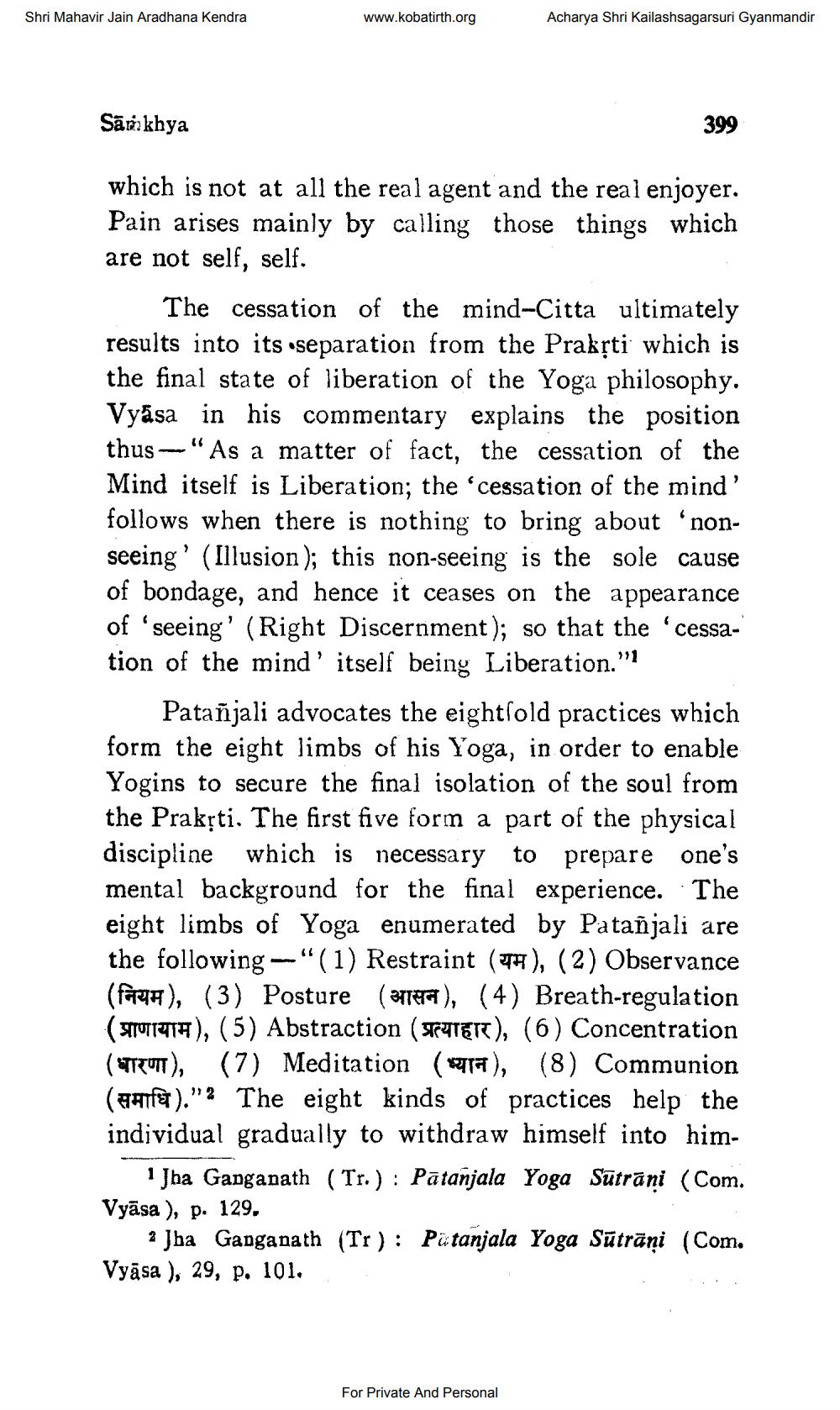________________
Shri Mahavir Jain Aradhana Kendra
www.kobatirth.org
Acharya Shri Kailashsagarsuri Gyanmandir
Sāra khya
399
which is not at all the real agent and the real enjoyer. Pain arises mainly by calling those things which are not self, self.
The cessation of the mind-Citta ultimately results into its separation from the Prakrti which is the final state of liberation of the Yoga philosophy. Vyāsa in his commentary explains the position thus —"As a matter of fact, the cessation of the Mind itself is Liberation; the 'cessation of the mind' follows when there is nothing to bring about 'nonseeing' (Illusion); this non-seeing is the sole cause of bondage, and hence it ceases on the appearance of 'seeing' (Right Discernment); so that the 'cessation of the mind' itself being Liberation."
Patañjali advocates the eightsold practices which form the eight limbs of his Yoga, in order to enable Yogins to secure the final isolation of the soul from the Prakệti. The first five form a part of the physical discipline which is necessary to prepare one's mental background for the final experience. The eight limbs of Yoga enumerated by Patañjali are the following "(1) Restraint (77), (2) Observance (farya), (3) Posture (217974), (4) Breath-regulation (STOTIETH), (5) Abstraction (STATETT), (6) Concentration (STTROTT), (7) Meditation (7), (8) Communion (FACE)."% The eight kinds of practices help the individual gradually to withdraw himself into him
"Jha Ganganath (Tr.) : Patanjala Yoga Sūtrāni (Com. Vyāsa ), p. 129.
a Jba Ganganath (Tr): Patanjala Yoga Sūtrāni (Com. Vyāsa ), 29, p. 101.
For Private And Personal




